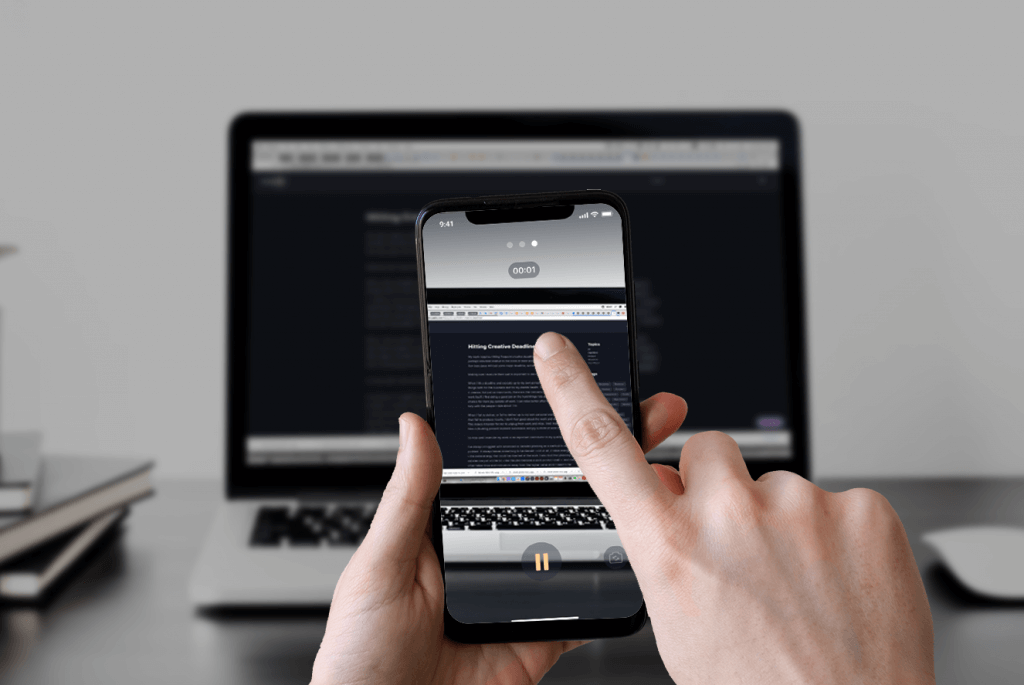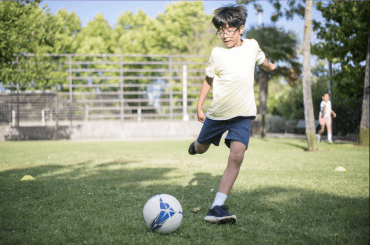My work requires hitting frequent creative deadlines. As a company founder, this is perhaps elevated relative to the norm of most knowledge workers – it’s rare that a few days pass without some major deadline, somewhere in the company.
Making sure I execute them well is important to me – in more than one way.
When I hit a deadline and execute up to my own personal standards, it does positive things both for the business and for my mental health. There are the business results it creates. But just as importantly, there are the moments of pride and joy from the work itself. I find doing a good job on the hard things I do at work also opens up the chance for more joy outside of work. I can relax better after work. I can engage more fully with the people I care about. Etc.
When I fail to deliver, or fail to deliver up to my own personal standards, it does more than fail to produce results. I don’t feel good about the work and often ruminate on it. This makes it harder for me to unplug from work and relax. And I have a much harder time cultivating present moment awareness and joy outside of work as a result.
So how well I execute my work is an important contributor to my quality of life.
I’ve always struggled with advanced or detailed planning as a method to address this problem. It always leaves something to be desired. First of all, it takes energy to plan – the same energy that could be directed at the work. I also find that planning satiates me just a little bit – like the plan became a work product itself – and that often takes drive and motivation away from the higher value work I need to be doing.
The most important truth of this for me is that it always takes more effort to hit creative deadlines than I would logically plan for. I don’t believe you can ever fully anticipate the effort required to do something original and to do so while meeting your own high personal standards. It almost always takes more effort than you’d ever imagine. And it is that conflict between what you plan for and reality where things often go most awry for me.
What I really need to perform is help in the moment, not in advance. I need help when I am doing the work to rise to the occasion. It’s so easy to get distracted, let other things dictate your intensity levels and just go through the motions. I need something that helps me sharpen my focus and go beyond what I can envision logically to access higher levels of performance.
Here’s how I use Focusable to help me do that.
Oftentimes, the time I have available to work on creative things is in the evening…a time I’d rarely use my calendar to manage. So I don’t time block. If the work is during the day – then I need to play defense on my calendar – and I do find that time blocking is helpful. This is why we will be adding this capability to Focusable soon.
Either way, I start by opening Focusable on my phone. I set up my phone next to my computer, so that I see it at the same time as I do my work. It’s kind of like a second screen for managing my attention in parallel to my work.

Depending on my fatigue or overstimulation levels I may start with a Recharge exercise. Box breathing is a quick way to get my energy up to focus. 478 breathing is my favorite for managing overstimulation. If my eyes are tired, I might also try an Eye Relief exercise to make sure I can engage my visual systems properly.
Oftentimes though, I feel that I have enough of a reserve of energy and focus to get started, so I just click start and use the one deep breath of the Pulse timer to draw me into my work quickly. I can honestly feel the effects of that one breath on my resilience when I do it.
I use the 5 minute notification of the Pulse timer to put pressure on myself to get moving. I want to make clear and visible progress on what I am doing in that short amount of time. The Pulse timer’s visual presence on my phone helps me struggle effectively against my mind’s desire to take the easy path (ie, to check Twitter or Slack). I try to avoid judgment on what I am producing to keep myself in motion as much as possible during that time. It’s about writing, designing, coding, etc.

All it typically takes is 5 minutes to get immersed in the work and for the distractions to fade away. Other times it takes longer. In those situations where it takes longer, I might restart the Pulse timer 1-2 more times to gain the energy to challenge myself to get into deep focus. Each time the single deep breath and the short finish line pulls me deeper into the work.
From that point, I am reliably in motion. My mental speed has been accelerated well above normal. The Focusable timer is visible and there to remind me to keep going whenever I need a nudge. I know that the 45 minute recording notification will arrive and give me a chance to stop what I am doing, synthesize my thinking, and maybe switch my mindset towards judging some of my work. I have almost started to think of it as a way to regularly implement my favorite design thinking process: Express Test Cycle.

Sometimes I’ll swipe over to record that higher order thinking on a Focusable video recording – especially if there’s something important I want to remember or share with others. Other times I just use the notification to shift my thinking processes to a higher order without recording them.
If I am really under pressure to deliver something and need that extra gear of intensity, after the 45 minutes is up I will swipe over to Recharge and do another exercise like Neck Stretching before I keep going.
Or if things are going well, I may just refocus and keep going to the next 45 minute recording notification. A 90 minute duration for focus is scientifically proven to be effective – after which the quality of your attention starts to decline. So at this point, I try to stop regardless of where I am at, record what I’ve been thinking about and then step away for a more substantial break. I might walk, sleep, workout or whatever.
If the project is large, I’ll use Focusable to accelerate my work over several sessions. But it isn’t uncommon for me to complete and ship an entire creative project in 90 minutes or less with this method.
Here’s an example Focusable activity from my time writing our last blog post “Breaking Free from Engaging Experiences”
Focusable has really been a breakthrough in helping me improve how I manage my attention in my creative work. It helps me hit deadlines, ship more and higher quality work and enjoy the mental health that doing so can bring to my life.


